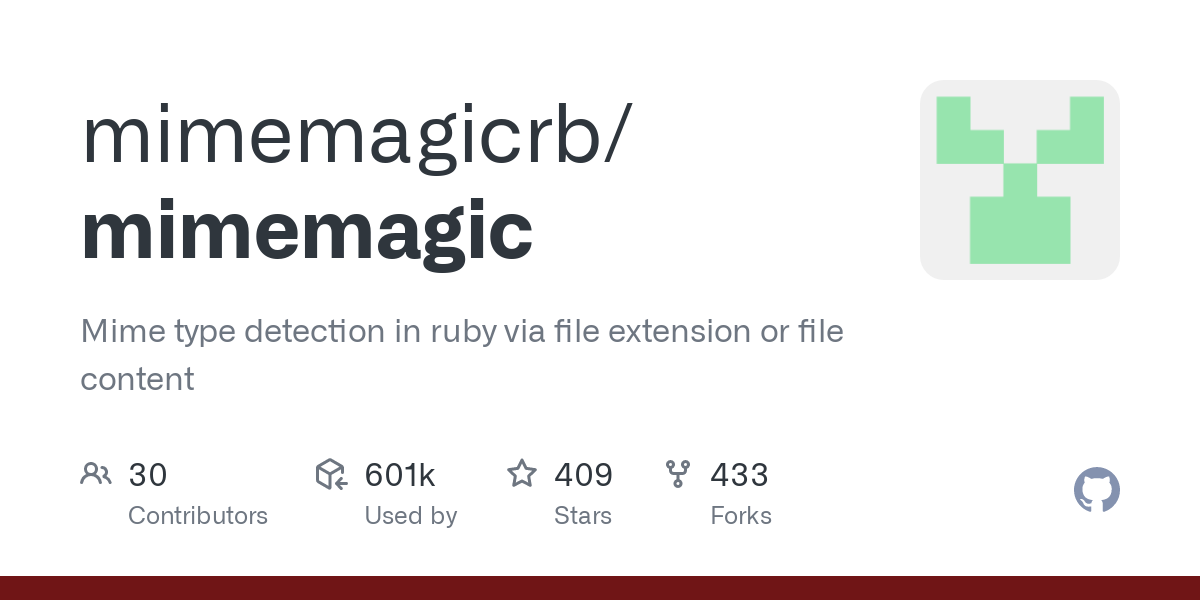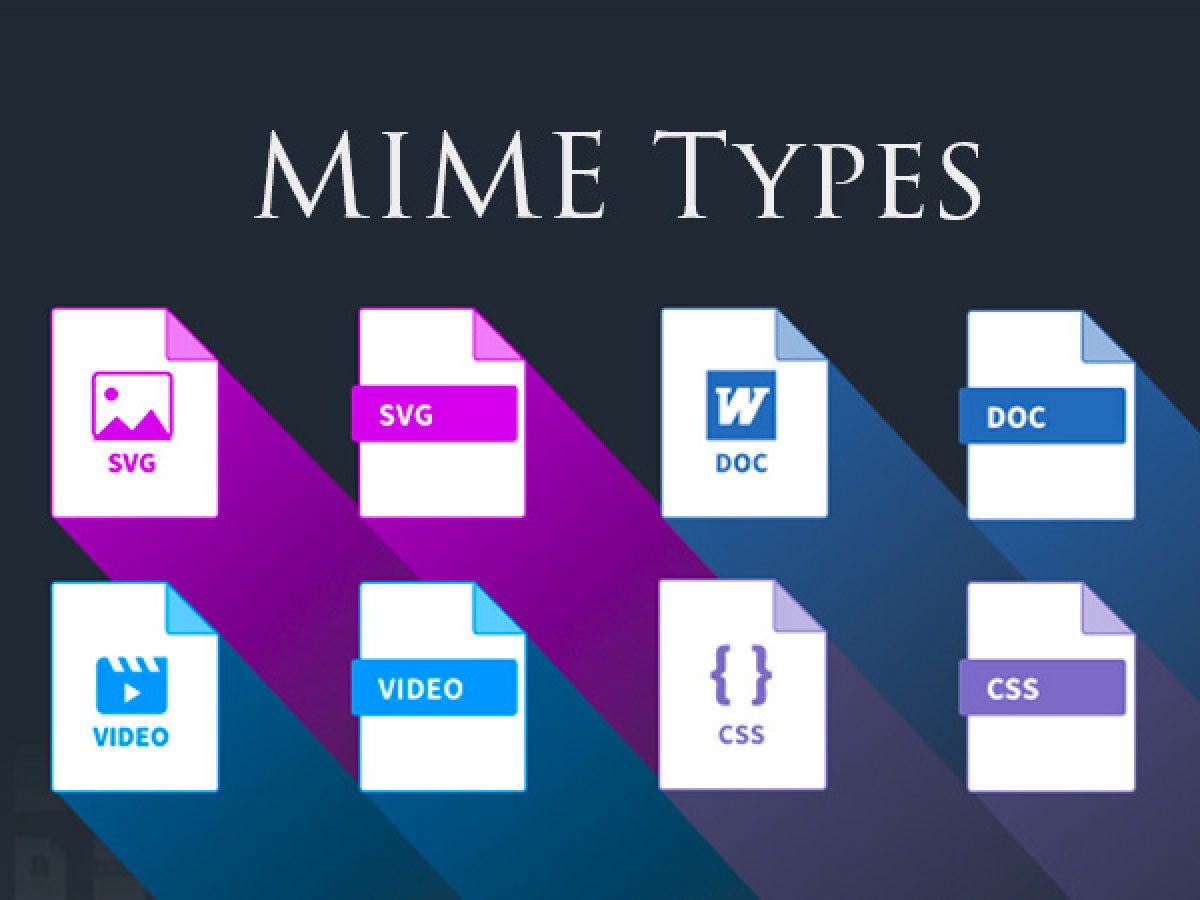Mimemagic - An Overview Of Its Features And Capabilities
Mimemagic is a Ruby library that allows you to detect MIME type of a file using various detection methods. It can determine the MIME type of a file by analyzing its contents, checking its extension, and using other techniques. This library is widely used in web applications and other software that deal with file uploads and file processing.
Author:Dr. Felix ChaosphereReviewer:Xander OddityMay 05, 202329 Shares998 Views

Mimemagicis a Ruby library that allows you to detect MIME type of a file using various detection methods. It can determine the MIME type of a file by analyzing its contents, checking its extension, and using other techniques. This library is widely used in web applications and other software that deal with file uploads and file processing.
The primary purpose of mimemagic is to provide a reliable way to detect the MIME type of a file. This is important because the MIME type provides information about the file format, which is needed to properly process the file. For example, if you are working with an image file, you need to know its MIME type in order to display it correctly in a web browser.
One of the key features of mimemagic is its ability to detect the MIME type of a file based on its contents. This is done by analyzing the magic bytes, or the first few bytes of the file. These magic bytes provide information about the file format, and mimemagic uses them to determine the MIME type.
Another feature of mimemagic is its ability to detect the MIME type of a file based on its extension. This is done by looking at the file extension and mapping it to a known MIME type. For example, if the file has a .jpg extension, mimemagic will map it to the MIME type image/jpeg.
Mimemagic also supports custom MIME type mappings. This means that you can add your own mappings to the library, which can be useful if you are working with a file format that is not included in the default mappings.
One of the benefits of using mimemagic is that it is very fast and efficient. This is important when working with large files or when processing many files at once. Mimemagic is also very accurate in its MIME type detection, which is important for ensuring that files are processed correctly.
One of the key benefits of Mimemagic is its ability to accurately detect file types based on both the file extension and the file content. This makes it more reliable than other methods that rely solely on the file extension, which can be easily spoofed or incorrect. Mimemagic uses a comprehensive database of file signatures to match against the contents of the file and determine its type.
Mimemagic also supports a wide range of file types, including many obscure or less commonly used types. This allows developers to handle a variety of different file types without having to write custom detection code for each one.
Another advantage of Mimemagic is its speed and efficiency. It is designed to be fast and lightweight, with minimal overhead or performance impact. This makes it ideal for use in web applications or other systems where speed and efficiency are critical.
In addition to its core functionality, Mimemagic also includes a number of useful features and options for developers. These include support for custom MIME type definitions, automatic updates of the MIME type database, and the ability to override MIME type detection for specific files or extensions.
Mimemagic is widely used in web applications and other software that deal with file uploads and file processing. It is used by many popular Ruby frameworks, such as Ruby on Rails, Sinatra, and Hanami. It is also used by other software, such as the Git version control system, the Homebrew package manager for macOS, and the Jekyll static site generator.
Mimemagic Vs File Command
Mimemagic and file command are two commonly used utilities for identifying the type of a file. Both tools work by examining the file's contents and comparing them to a database of known file types to determine the format of the file. However, there are some differences between the two tools that can affect their performance and usefulness in certain situations.
Mimemagic is a Ruby library for detecting the MIME type of a file. It uses a combination of file extensions, magic number tests, and other heuristics to identify the type of a file. Mimemagic is typically used as part of a larger web application or content management system, where it can be used to automatically set the content type of a file when it is uploaded or downloaded.
File command, on the other hand, is a Unix utility that is used to determine the type of a file by examining its contents. File command reads the first few bytes of a file and compares them to a database of known file types. Based on this comparison, it returns a description of the file type, such as "JPEG image data" or "ASCII text".
One major difference between mimemagic and file command is that mimemagic can identify the MIME type of a file based on both its contents and its extension. This can be useful in cases where the file extension has been changed or is incorrect. For example, if a user uploads a file with a ".jpg" extension that is actually a PNG image, mimemagic can correctly identify the file as "image/png" based on its contents. File command, on the other hand, relies solely on the file's contents to identify its type.
Another difference between the two tools is that mimemagic can be extended with custom MIME types and file extensions. This can be useful in cases where an application needs to handle a specific type of file that is not included in the default mimemagic database. File command, on the other hand, relies on a static database of file types that cannot be easily modified or extended.
One key difference is in how they identify file types. The file command uses a database of known file signatures to identify a file type, while mimemagic uses a combination of file signatures, file extensions, and other metadata to identify the file type. This means that mimemagic can provide more accurate results in some cases, especially when dealing with files that have non-standard signatures or extensions.
Another difference is in their ease of use. The file command is a command-line tool that requires users to run a command and provide the file path as an argument. Mimemagic, on the other hand, is a library that can be used within a programming language such as Ruby or Python. This makes it easier for developers to integrate file type identification into their applications.
In terms of performance, both mimemagic and file command are relatively fast and efficient at identifying file types. However, mimemagic may be slower in certain cases where it needs to perform multiple tests to determine the type of a file. For example, if a file has an incorrect or missing extension, mimemagic may need to perform several tests to determine its type based on its contents. In contrast, file command typically only needs to perform a single test based on the file's contents.
In summary, both mimemagic and file command are useful tools for identifying the type of a file based on its contents. Mimemagic has some advantages over file command, such as the ability to identify MIME types based on both contents and extension, and the ability to be extended with custom types and extensions. However, file command is generally faster and more lightweight, and may be more suitable for certain use cases where only basic file identification is required.
People Also Ask
What Is Mimemagic Used For?
Mimemagic is used for identifying the MIME type of a file based on its contents, file extension, or both.
How Do I Install Mimemagic?
You can install mimemagic using a package manager like RubyGems or npm, depending on the programming language you are using. Alternatively, you can download the source code and install it manually.
Can Mimemagic Handle Custom MIME Types?
Yes, mimemagic can handle custom MIME types by adding them to the MIME database or by providing a custom database file.
Is Mimemagic Cross-platform Compatible?
Yes, mimemagic is compatible with multiple platforms, including Linux, macOS, Windows, and FreeBSD.
What Programming Languages Are Supported By Mimemagic?
Mimemagic supports several programming languages, including Ruby, Python, Node.js, and Go.
Conclusion
Mimemagic is a powerful and reliable library for detecting the MIME type of a file. It provides a fast and accurate way to determine the file format, which is important for processing files correctly. Its ability to detect MIME type based on contents, extension, and custom mappings makes it a versatile tool for a wide range of applications.

Dr. Felix Chaosphere
Author
Dr. Felix Chaosphere, a renowned and eccentric psychiatrist, is a master of unraveling the complexities of the human mind. With his wild and untamed hair, he embodies the essence of a brilliant but unconventional thinker. As a sexologist, he fearlessly delves into the depths of human desire and intimacy, unearthing hidden truths and challenging societal norms.
Beyond his professional expertise, Dr. Chaosphere is also a celebrated author, renowned for his provocative and thought-provoking literary works. His written words mirror the enigmatic nature of his persona, inviting readers to explore the labyrinthine corridors of the human psyche.
With his indomitable spirit and insatiable curiosity, Dr. Chaosphere continues to push boundaries, challenging society's preconceived notions and inspiring others to embrace their own inner tumult.

Xander Oddity
Reviewer
Xander Oddity, an eccentric and intrepid news reporter, is a master of unearthing the strange and bizarre. With an insatiable curiosity for the unconventional, Xander ventures into the depths of the unknown, fearlessly pursuing stories that defy conventional explanation. Armed with a vast reservoir of knowledge and experience in the realm of conspiracies, Xander is a seasoned investigator of the extraordinary.
Throughout his illustrious career, Xander has built a reputation for delving into the shadows of secrecy and unraveling the enigmatic. With an unyielding determination and an unwavering belief in the power of the bizarre, Xander strives to shed light on the unexplained and challenge the boundaries of conventional wisdom. In his pursuit of the truth, Xander continues to inspire others to question the world around them and embrace the unexpected.
Latest Articles
Popular Articles
